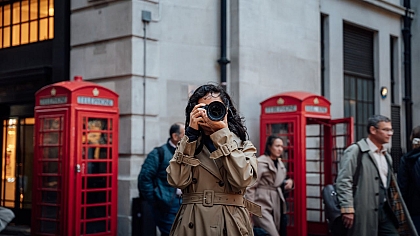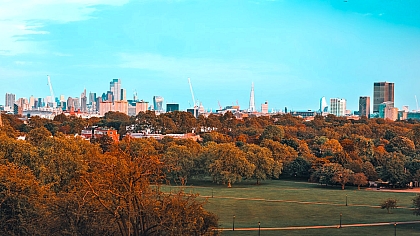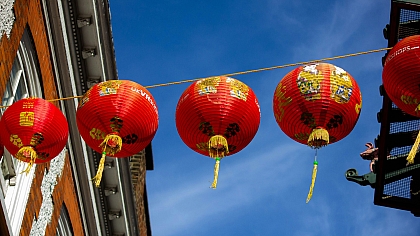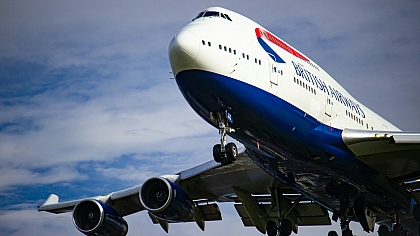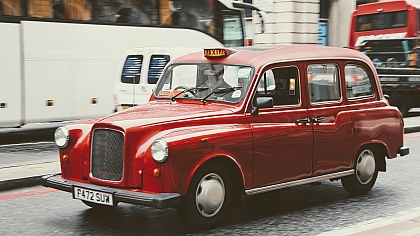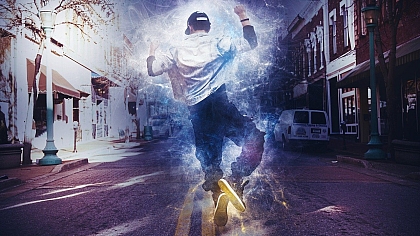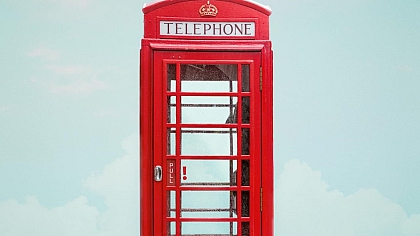
Ski Safety: 10 Essential Tips for Staying Safe on the Slopes
When hitting the slopes in London or venturing to nearby ski resorts, safety should be your top priority. Understanding ski safety is essential to ensure an enjoyable experience for everyone, whether you're a seasoned skier or a beginner. Start by investing in proper gear, including a well-fitted helmet and appropriate clothing for the conditions.
Familiarize yourself with the ski resort’s guidelines, such as understanding trail difficulty levels and following posted signs. Always ski with a buddy, communicate your plans, and take the time to warm up before hitting the slopes to prevent injuries. Additionally, be aware of your surroundings, and respect other skiers and snowboarders to maintain a safe environment. By following these essential tips, you can enjoy the thrill of skiing while prioritizing safety on the slopes.
While London itself doesn’t have traditional ski slopes, there are several indoor ski facilities and nearby outdoor options for skiing and snowboarding. Here are a few notable mentions:
-
Indoor Ski Facilities:
- The Snow Centre in Hemel Hempstead: Located about 23 miles from central London, this indoor snow slope offers real snow for skiing and snowboarding year-round.
- Snozone in Milton Keynes: This indoor facility features snow-covered slopes and provides lessons and equipment rental.
-
Nearby Ski Resorts:
- Lecht Ski Resort and Glenshee: Located in Scotland, these resorts are a bit further away but popular for skiing and snowboarding trips from London.
- A range of resorts in the French Alps and other European destinations can be reached via a short flight from London, making them accessible for weekend ski trips.
So, while you won't find traditional ski slopes within London, there are options for skiing enthusiasts nearby! That said, skiing is still a popular choice for winter holidays among Britons, with many heading out to renowned spots like the Alps and the Pyrenees each year. While skiing offers thrilling experiences, it also carries inherent risks. Understanding and avoiding these risks is key for every skier.
Here, we provide essential tips to help you stay safe on the slopes and offer guidance on what to do if you encounter legal issues due to a ski accident abroad.
The Essential Tips
To ensure a safe and enjoyable skiing experience, it's vital to be aware of the basic safety precautions. Take a look at our tips that can help you avoid common pitfalls and stay safe on the slopes:
1. Wear Proper Gear
- It's essential to wear a properly fitted helmet at all times, as it significantly reduces the risk of head injuries in the event of a fall or collision. Choose a helmet that meets contemporary safety standards such as the CE mark or ASTM certification.
- Goggles are needed to protect your eyes from harmful UV rays and improve visibility by reducing glare off the snow. Ensure they fit well with your helmet and provide a clear, unobstructed view.
- Proper ski wear is not just about warmth; it also includes protection against moisture, wind and injuries. Invest in quality, water-resistant clothing, including gloves and boots that offer both insulation and mobility.
- Ensure that your boots fit correctly to avoid discomfort and injuries. They should be snug yet comfortable, providing stable support for both skiing and walking on snow.
- Regularly check the condition of your gear, especially if you own it. Worn-out or damaged equipment can compromise your safety and performance on the slopes.
2. Understand Your Skill Level
- Accurately assessing your skiing skills helps prevent accidents by ensuring you choose slopes and activities suitable for your level of expertise. Avoid challenging runs that exceed your abilities and confidence.
- If you are a beginner, prioritise taking professional skiing lessons. Ski schools are available at most resorts and provide instruction that will improve both your skills and your understanding of slope safety.
- Understanding your skill level also involves recognising improvements and when it might be time to challenge yourself with more advanced slopes under safe conditions.
- Always ski within your limits. Pushing yourself too hard can lead to loss of control and accidents, especially in unfamiliar environments.
- Be mindful of how fatigue, both physical and mental, can impact your skiing. As you tire, your ability to handle more challenging runs will diminish, so acknowledge when it's time to switch to easier trails or take a break.
3. Check Weather and Avalanche Forecasts
- Before you head to the slopes, checking the local weather conditions is vital as it can drastically change within hours. Stay informed through reliable sources like the resort's official website or local weather apps.
- Avalanche risk is a serious concern in many popular skiing destinations. Always check the avalanche forecast, which is often provided by local mountain safety authorities, to ensure the areas you plan to ski in are safe.
- Be particularly cautious after heavy snowfall or rapid temperature changes, as these conditions can significantly increase the likelihood of avalanches.
- If you're planning to ski off-piste, consider carrying avalanche safety equipment such as a beacon, probe and shovel, and know how to use them. Additionally, skiing with a guide who knows the terrain and its current conditions can be invaluable.
- Educate yourself on how to recognise the early signs of an avalanche and learn the basic safety protocols to follow if you find yourself in such a situation. It’s also wise to take an avalanche safety course if you frequently ski in high-risk areas.
4. Follow Ski Resort Rules and Signage
- Ski resorts design their rules and signage to ensure the safety of all visitors, so it’s imperative to adhere to them. This includes skiing within the marked boundaries and following instructions on all signs.
- Understand and respect the colour-coded trail markers that indicate the difficulty level of each slope. Green circles denote easy trails, blue squares are more challenging, and black diamonds indicate advanced slopes that are not suitable for beginners.
- Pay attention to any signs indicating closed areas or hazards such as thin ice, deep snow or potential rock falls. Ignoring these signs can put you and others at risk.
- Be aware of right-of-way rules on the slopes; generally, people below you and those ahead of you have the right-of-way. It's your responsibility to avoid collisions with them.
- During times of low visibility, like fog or heavy snowfall, follow low-visibility signage and consider taking extra precautions, such as skiing at a slower pace or sticking to familiar paths until conditions improve.
5. Warm Up and Stay Fit
- Begin each skiing day with a thorough warm-up to prepare your muscles for the intense activity ahead. Stretching exercises that target the legs, hips and back can help reduce the risk of injuries on the slopes.
- Core strength is particularly important for skiers, as it aids in maintaining balance and stability on the slopes. Engage in exercises such as planks and leg lifts to build a stronger core.
- Remember that fatigue can lead to mistakes and accidents; maintaining good physical condition helps ensure that your body can withstand the rigours of skiing throughout the day.
6. Use Well-Maintained Equipment
- Always start your ski season with a professional check of your equipment. This includes ensuring that ski bindings are correctly adjusted to your weight and skill level, which is critical for safe skiing.
- Regular maintenance of your skis, such as waxing and sharpening the edges, can significantly improve performance and safety. Sharp edges give better grip on icy surfaces, and a good wax helps maintain speed and control.
- Inspect your equipment for any signs of wear and tear before and after each trip. Look for cracks in the skis or fraying on the straps of your boots, which could lead to malfunction on the slopes.
- If you're renting equipment, don't just accept what you're given. Check that it's in good condition, fits well, and suits your skiing style and ability level.
- For those who frequently ski, investing in your equipment might be more beneficial in the long term. Owning your gear allows you to become familiar with its performance characteristics and ensures a consistent maintenance history.
7. Stay Hydrated and Protected Against the Sun
- Hydration is important when skiing, as the cold climate can often mask signs of dehydration. Carry a water bottle and take regular sips throughout the day, even if you don’t feel thirsty.
- At high altitudes, the air is dryer and the body loses water through respiration faster than usual. This can increase your risk of dehydration, impacting your energy levels and cognitive functions, which are vital for safe skiing.
- The sun’s UV rays are more intense in mountainous environments, particularly because they reflect off the snow. Always apply a broad-spectrum sunscreen with a high SPF to exposed skin and reapply every two hours or after sweating.
- Wear sunglasses or goggles that offer UV protection to protect your eyes from UV radiation and glare. This not only prevents sun damage but also improves visibility on the slopes.
8. Ski with a Buddy
- Skiing with a partner or in a group not only enhances the enjoyment of the activity but also ensures that help is readily available in case of an accident or emergency.
- A buddy can assist you if you get lost, injured, or need help navigating unfamiliar slopes. They can also provide immediate assistance and alert ski patrol if you’re unable to do so yourself.
- Coordinate with your ski partner to choose runs that suit both your skill levels and agree on meeting points in case you get separated.
- Ensure that each person in the group has a means of communication, like a mobile phone in a waterproof case or a walkie-talkie, especially when skiing in remote areas or off-piste.
- It’s also a good practice to inform a third party not on the slopes about your ski plans, including your expected return time, so they can raise the alarm if you do not check in as planned.
9. Know What to Do in an Emergency
- Familiarise yourself with the basic first aid procedures for common skiing injuries such as sprains, fractures and hypothermia. Knowing how to respond quickly can prevent injuries from worsening.
- Always carry a fully charged mobile phone and save emergency contact numbers, including the local ski patrol. Also, have international emergency numbers handy if you're skiing abroad.
- If an accident occurs, assess the situation calmly; if someone is injured, do not move them unless they are in immediate danger. Signal for help or send someone to notify the ski patrol if you cannot make a call.
- Keep an emergency kit in your backpack, including a whistle, a basic first aid kit, and an emergency blanket. These items can be lifesaving while waiting for help to arrive in a remote location.
- Learn the universal signs for help and distress. Using these signals can alert other skiers or rescue teams even from a distance if you’re unable to call out or communicate.
10. Take Regular Breaks
- Listen to your body’s signals and take breaks when you feel fatigued. Overexertion can lead to decreased coordination and reaction time, increasing the risk of accidents.
- Schedule breaks throughout your skiing day, especially if skiing in colder temperatures, to warm up and rest. This helps maintain energy levels and keeps your muscles relaxed.
- Use break times to rehydrate and have a snack. Keeping your energy up is essential for maintaining concentration and physical performance on the slopes.
- Check your equipment during breaks for any signs of damage or issues that could impact your safety, such as loose bindings or moisture in your boots.
- Breaks also provide an opportunity to reassess the weather and slope conditions. Weather in the mountains can change rapidly, and staying updated can help you make safer decisions about whether to continue skiing or call it a day.
What to Do If You’ve Had a Ski Accident Abroad
If you have a skiing accident abroad, it is important to consult a personal injury solicitor who specialises in ski accident claims. Choose a solicitor with experience in handling cases involving foreign jurisdictions and international insurance claims.
Seek legal advice promptly after the accident to ensure timely collection of evidence and witness testimonies. An experienced solicitor will help protect your rights and ensure you receive appropriate compensation for your injuries and losses.
Exploring Winter Sports Nearer to London: Ski Centres and Snowboarding Facilities
When hitting the slopes, whether in the Alps or closer to home in London's surrounding ski resorts, safety should always be a top priority. Before you embark on your skiing adventure, familiarize yourself with these essential tips to ensure a safe and enjoyable experience.
- First and foremost, ensure your equipment is in excellent condition and properly fitted.
- Always wear a helmet and appropriate ski attire to protect against cold weather and potential falls.
- Stay hydrated and take breaks to avoid fatigue, especially if you're not accustomed to the altitude.
- Familiarize yourself with the ski resort's rules and adhere to trail markers to avoid venturing into hazardous terrain.
- Lastly, consider taking lessons or skiing with a buddy for added safety.
By following these guidelines, you can maximize your enjoyment on the slopes while minimizing risks.
As we mentioned earlier, London itself does not have ski resorts within the city limits due to its geographical location in the southeast of England, where the terrain is relatively flat. However, there are several ski centres and dry ski slopes in the surrounding areas and within a few hours' drive of London. These facilities provide opportunities for skiing, snowboarding, and other winter sports activities, making them accessible for London residents seeking winter recreation without travelling far.
Popular destinations include locations in the Home Counties such as Hemel Hempstead, Welwyn Garden City, and Milton Keynes, where indoor snow centres or dry ski slopes offer skiing and snowboarding experiences. For those willing to travel further, there are also options in the mountainous regions of Scotland or even across Europe, which can be reached relatively quickly by plane from London.
